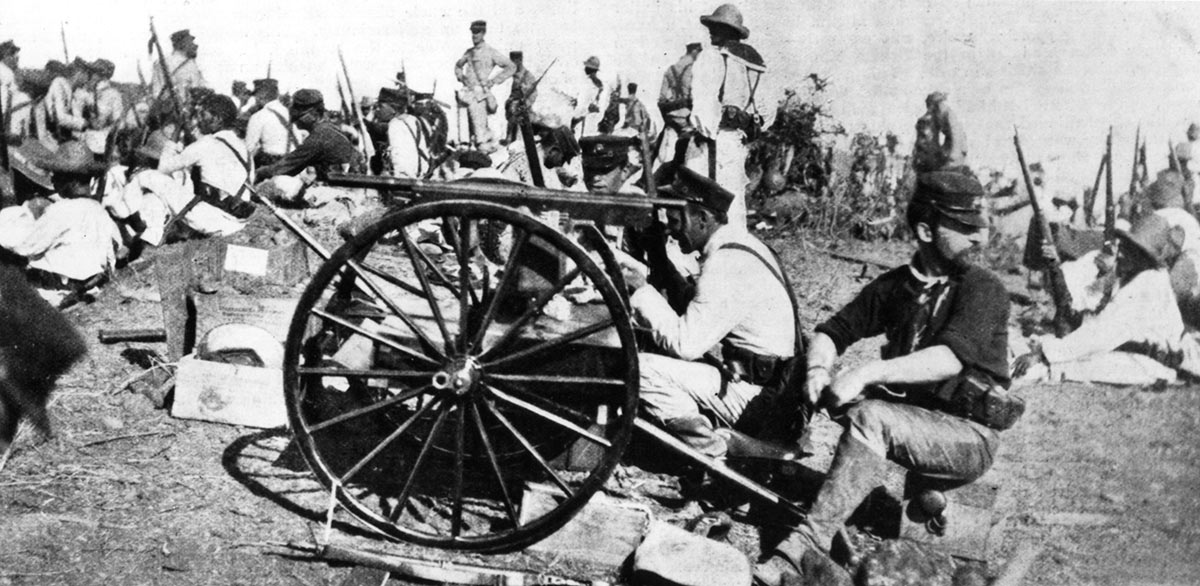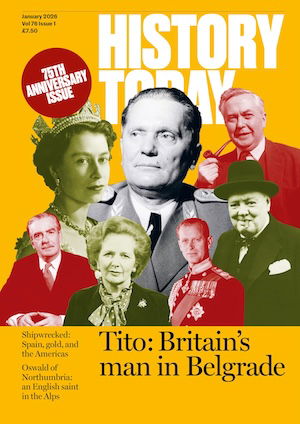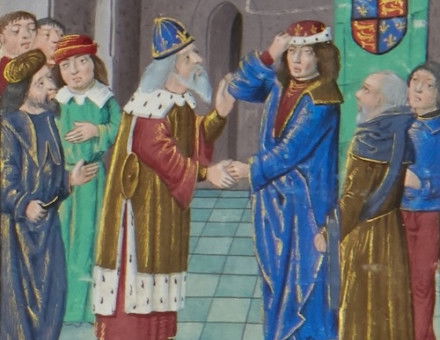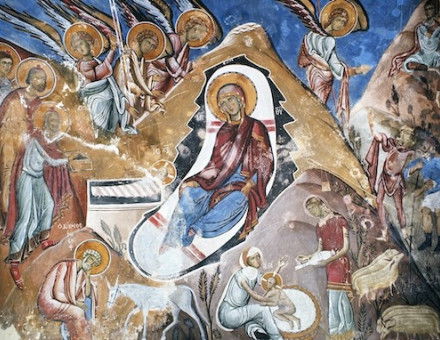
A Splendid Little War
Roger Hudson sheds light on an 1898 image of US soldiers fighting alongside Cubans to end Spanish rule on the Caribbean island.
It is June 12th, 1898 and the US Marines have recently landed at Guantanamo Bay, at the eastern end of Cuba. They wear garrison caps while the Cuban mambises (insurgents) have straw hats, though some have been issued with US sailors’ uniforms. War broke out between the Spanish rulers of Cuba and the US on April 24th, but an uprising against colonial rule had started in 1895. Now Americans and Cubans fight alongside each other. The fire power of the wheeled Colt machine gun will be useful, for many US troops are still armed with old-fashioned single-shot, black powder rifles against the Spaniards’ Mausers. Soon the decisive battle of the war will take place nearby, at Santiago, when Theodore Roosevelt will lead his volunteer Rough Riders in a charge (on foot) up Kettle Hill and the Spanish will be defeated. In 1901 Cuba will get her independence, though the US retains the right to intervene, if it is felt that stability there is threatened, and to maintain a permanent naval base at Guantanamo. The Marines will return in 1906, 1913, 1917 and 1933.





